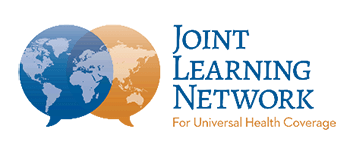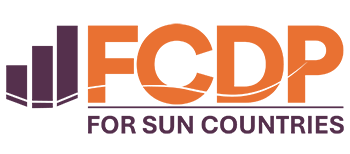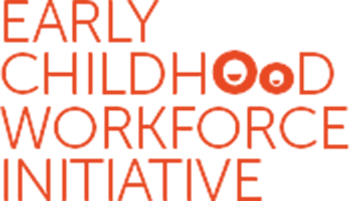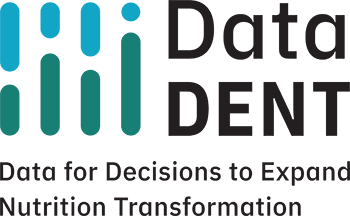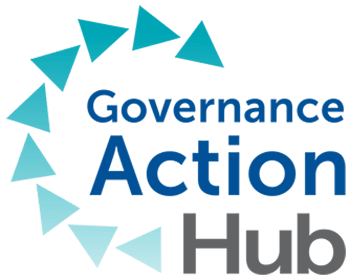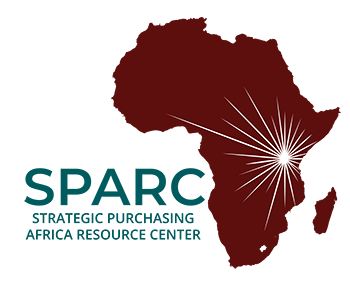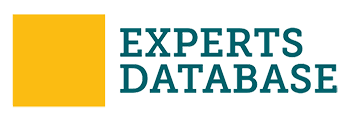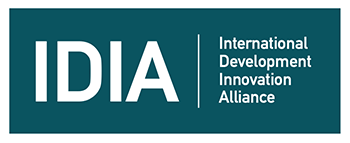Rethinking how we support immunization: 5 bold ideas for the future
Editor’s note: In a recent blog, R4D CEO Gina Lagomarsino outlined five ideas for the global community to better enable the success of local leaders and institutions amid massive changes to global development programs and funding. This World Immunization Week, we’re considering those ideas, how they can be applied to improving immunization programs, and how we can center local leaders and institutions in pursuit of our goal of a healthier world.
Each year, in the final week of April, World Immunization Week celebrates one of humanity’s greatest achievements — vaccines — and urges collective action to further reduce needless suffering from vaccine-preventable diseases. Immunization helps peoples of all ages live longer, healthier lives, preventing 3.5 million to 5 million deaths every year.
It is one of the most cost-effective public health interventions and plays a vital role in global health security. Vaccines help prevent and respond to outbreaks, epidemics, and pandemics, which are becoming increasingly likely, frequent, and widespread due to factors including mass migration, urbanization, climate change, and antimicrobial resistance.
This year, the weight of the challenges to further improve immunization coverage seems heavier. Addressing them feels more urgent.
Immunization coverage stagnated in the decade leading up to the Covid-19 pandemic, which disrupted health systems and service delivery and caused significant setbacks. As of 2023, immunization coverage has yet to be restored to 2019 levels.
We find ourselves now at another watershed moment in global health: several countries have significantly reduced their development assistance funding, including the United States, which abruptly cancelled more than 5,000 foreign assistance programs. Among those cancellations was the MOMENTUM Routine Immunization Transformation and Equity Program, which was working to increase equitable immunization coverage across 20 countries. The U.S. also withdrew from the World Health Organization (WHO) and has indicated plans to stop funding the global vaccine alliance, Gavi. The planned contributions from the U.S. to Gavi are projected to save over 8 million lives over the next five years.
Even as the global health community reels from these decisions, and though we fear the loss of so many hard-won gains, we must adapt to our new reality. Investments must be prioritized to achieve the greatest outcomes and increase countries’ self-reliance and the resilience of their health systems, and we must lean further into localization.
1. Support more effective domestic financing for immunization programs.
With such a contraction in global development funding, the focus must shift to domestic resources for financing critical health programs and services. Prioritizing programs and allocating resources is always tough; now countries, whose reliance on external funding mechanisms varies, must confront even more challenging decisions about how to allocate limited funds for maximum impact and how to manage those funds for effective and appropriate use.
The global development community has an important part to play here: Mobilizing more domestic financing, ensuring the continued availability of sufficient domestic resources for immunization and optimizing efficiency all require evidence and experience-sharing — especially as new vaccines become available.
The Linked Immunisation Action Network, a collaborative learning network managed by R4D, helps develop and deploy some of that much-needed evidence and experience. The network — a key part of Gavi’s strategy — gives immunization practitioners, policymakers and partners a venue to access relevant knowledge products and a facilitated process to share experiences and identify common immunization program challenges, as well as practices for greater resilience, equity, and sustainability.
This low-cost approach supports countries as they translate those learnings into locally driven change. As countries, their institutions and their local organizations work to mobilize additional domestic financing, collaborative learning networks like Linked can offer them the necessary space to track progress and work through common obstacles.
2. Reduce fragmentation across immunization and broader health systems.
The vision of strong integrated health systems aligns with the vision of localization. While foreign aid has driven significant progress, its well intentioned focus on priority health areas, such as immunization, has perpetuated fragmentation.
Immunization programs and their partners have made some progress toward integration. Together we have identified opportunities to expand the reach of immunization (and other health services), including delivering multiple health services targeting similar populations, especially those with more limited access to the health system. The global immunization community has also made some investment in the broader health and primary health care (PHC) systems, but we can do more to support holistic and integrated health systems.
The rationale for strong integrated health systems is clear: People will receive timely, comprehensive and continuous care for a wide range of health-related concerns and conditions while emphasizing prevention and health promotion. But system strengthening is an expensive, expansive and longer-term endeavor. Systems are complex and unpredictable, and system challenges often have deep roots. There are also challenges of measuring the impact of system strengthening efforts and sustaining improvements over time.
But when country leaders’ priorities drive how improved health outcomes are achieved, those leaders will call on the global community to support a more holistic and integrated approach that provides benefits across entire populations.
3. Align development partner support around country-led immunization strategies.
Immunization programming at the country level has a significant, decades-long history of coordinated support across multilateral and bilateral donors. But with fewer resources available, it is urgent for the global development community to strengthen its coordination — with each other and with country leaders.
Donors and implementing partners must interrogate whether their agendas and funding mechanisms truly incentivize collaboration. More importantly, they must ensure they’re in sync with country leaders and aligned with the countries’ immunization strategies and objectives.
4. Invest in technologies that create more efficient and effective immunization systems.
Digital technology will not be a panacea, but immunization is a numbers game — one driven by routine and timely use of quality data. Countries will need support to strategically employ, scale, and integrate new technologies, such as those used for electronic immunization registries or capture immunization data.
Many clear opportunities for leveraging technology exist:
- Mobile phone messages can send immunization appointment reminders to caregivers
- Software tools can manage and track vaccines from the manufacturer to the point of administration, ensuring they remain at the correct temperature and are accounted for throughout the process.
- Electronic immunization registries and hardware such as digital tablets are vital for tracking, increasing and sustaining coverage of vulnerable populations, improving the timeliness of vaccination, and providing important research and performance data.
- In Ghana, for example, R4D worked with USAID and the Rockefeller Foundation to distribute and train health workers on using tablets for Covid-19 vaccination. The immunization effort, which began in early 2021, was the largest in the country’s history. The tablets created digital vaccination records, provided real-time insights and data and allowed the Ghana Health Service to better target areas with lower vaccination rates. As a result, the Ghana Health Service was able to achieve 50% or greater vaccine coverage in most of its regions by late 2022.
- Chatbots can be used to support the mental wellbeing of health workers during an outbreak, epidemic or pandemic.
Importantly, country ownership of these interventions should be prioritized from the outset, along with feasibility, scalability and sustainability.
5. Build new, more nimble approaches to support the success of local institutions leading immunization research and strategy.
The previously mentioned Linked Immunisation Action Network supports middle-income countries (MICs) that have transitioned from receiving traditional technical and financial assistance from Gavi. As its director, I often think about where countries can turn when they face immunization program challenges.
Though these middle-income countries’ economies are growing, they still face many of the same challenges as lower- and higher-income countries but with fewer resources for support. They rely on their local institutions — think tanks, universities, civil society and private-sector organizations — as well as their peer countries for expertise.
Now is the time to adopt more agile approaches to technical assistance that prioritize the expertise of local institutions, provide coaching for country leaders in charge, and strengthen the entire learning and evidence ecosystem. This is especially critical for countries still receiving assistance and for those about to transition from that assistance.
One way to do this is to enable cross-country learning and help translate global evidence into practice. Collaborative, peer-to-peer learning networks such as Linked are a prime example. These networks recognize the experiences and expertise of local leaders, and a 2023 impact brief demonstrated that Linked is an enabler, catalyst and accelerator for countries’ progress toward middle-income countries’ immunization outcomes and objectives.
Organizations with strong technical facilitation skills and deep global ties are exceptionally well positioned to coordinate these networks, which have a much lower cost than traditional technical assistance programs.
***
Our global health community is resilient, and we can emerge from this challenging moment stronger and more well equipped to build a healthier, more prosperous future. We cannot abandon the vision of the Immunization Agenda 2030 and must instead strengthen our resolve to achieve the ambitious target of saving more than 50 million lives.
At R4D, our mission is focused on enabling change agents — government, civil society, and private sector leaders — to create self-sustaining systems for health, education and nutrition. We pride ourselves on pioneering more effective development approaches, embracing change and fostering new ways of working. As we navigate this new landscape, we welcome your partnership in envisioning new possibilities.


